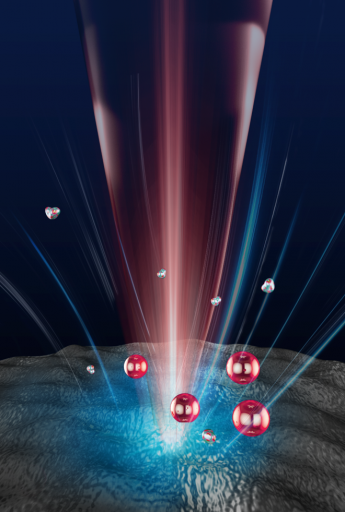Jun 28 2021
In 2018, Arthur Ashkin received the Nobel Prize for developing optical tweezers, which employ light in the form of a high-powered laser beam to seize and exploit particles.
 Optical tweezers use light to trap particles for analysis. A new breakthrough keeps those particles from overheating. Image Credit: The University of Texas at Austin.
Optical tweezers use light to trap particles for analysis. A new breakthrough keeps those particles from overheating. Image Credit: The University of Texas at Austin.
Although optical tweezers were created many years ago, they still lead to major innovations and are extensively used today to investigate biological systems.
Yet, optical tweezers still have certain drawbacks. The extended interaction with the laser beam can modify particles and molecules, or even damage them with extreme heat.
To address this problem, scientists from The University of Texas at Austin developed a new version of optical tweezer technology. This advancement could open the already highly renowned tools to new kinds of studies and ease the processes for their current usage.
The new technology, which prevents this overheating problem, emerged from a combination of two ideas: the use of a substrate made up of materials that are cooled by shining a light on them (in this example, a laser); and a concept known as thermophoresis — a phenomenon where mobile particles will generally move towards a cooler environment.
The cooler materials attract the mobile Particles, rendering them easier to separate and, at the same time, protecting them from overheating. Resolving this overheating issue could expand the applications of optical tweezers for studying DNA, biomolecules, diseases and much more.
The article was published in the Science Advances journal.
Optical tweezers have many advantages, but they are limited because whenever the light captures objects, they heat up. Our tool addresses this critical challenge; instead of heating the trapped objects, we have them controlled at a lower temperature.
Yuebing Zheng, Study Corresponding Author and Professor, Walker Department of Mechanical Engineering, The University of Texas at Austin
Optical tweezers perform the same task as standard tweezers, that is, they pick up tiny objects and exploit them. The difference, however, is that optical tweezers work at a relatively smaller scale and make use of light to seize and move objects.
Optical tweezers are commonly used for DNA analysis, but this application involves joining nano-sized glass beads to the particles. Then to shift the particles, the laser is shined on the beads rather than the particles themselves. This is because the heating effect of the light would damage the DNA.
When you are forced to add more steps to the process, you increase uncertainty because now you have introduced something else into the biological system that may impact it.
Yuebing Zheng, Study Corresponding Author and Professor, Walker Department of Mechanical Engineering, The University of Texas at Austin
These additional steps are prevented by the new, improved version of optical tweezers.
The next step of the team is to develop autonomous control systems, rendering them easier for individuals without specialized training to use, and to expand the capabilities of the optical tweezer to manage biological fluids, like urine and blood. The researchers are also working to commercialize this discovery.
Zheng and his research team have much variety in their studies but it all boils down to light and its interaction with materials. This focus on light has made Zheng closely track and use optical tweezers in his research work. The team is aware of thermophoresis and are hoping to trigger it with cooler materials, which would truly attract particles into the laser to streamline the analysis.
The study was funded by grants from the National Institutes of Health’s National Institute of General Medical Sciences and the National Science Foundation.
Other authors of the study are Jingang Li and Zhihan Chen of the Texas Materials Institute of the University of Texas at Austin, Yaoran Liu from the Department of Electrical and Computer Engineering, Pavana Siddhartha Kollipara from the Walker Department of Mechanical Engineering and Yichao Feng and Zhenglong Zhang from Shaanxi Normal University’s School of Physics and Information in China.
Journal Reference:
Li, J., et al. (2021) Opto-refrigerative tweezers. Science Advances. doi.org/10.1126/sciadv.abh1101.